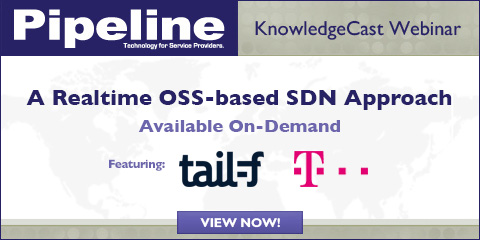Monetizing Big Data Services
By: Becky Bracken

Reading the tea leaves of Big Data analytics reduces churn and provides insight into customers who can be leveraged to improve the overall customer experience, from network performance to customer service. And that’s important, but for communications service providers (CSPs) on the hunt for new sources of revenue, Big Data has a much larger role to play.
A total of 1.7 billion people, or approximately one out of every four human beings, will use a social networking site this year, according to eMarketer, with the total predicted to reach 2.5 billion by 2017. And in June the Pew Research Center reported that 91 percent of American adults own a cell phone, while the International Telecommunication Union (ITU) says that by next year the number of cell-phone accounts around the world, at 7.3 billion, will exceed the world’s entire population.
It’s almost impossible to not leave a personal-experience imprint on a mobile network. And the information that’s captured as just about everyone on the planet traverses those networks holds the answers to almost any question that could be asked about human and, more importantly, consumer behavior. That’s why, in the US, “Big Brother” immediately zeroed in on the biggest CSPs’ mobile networks to gather Big Data intelligence about potential terrorist threats. If you really want to get to know someone, digital behavior is the best place to start.
Mobile operators own the juiciest bits of data. They know who and where the customer is along with his or her internet-search tendencies, voice-service usage patterns and SMS, billing, payment, and financial information, which delivers unlimited value to retailers, marketers—pretty much any business that’s looking to capture a particular audience.
ParStream CEO Michael Hummel thinks CSPs haven’t yet recognized the potential value of their customer data.“Carriers still see themselves as network operators. They call themselves service providers, but they don’t seem to own up to that name,” he says. “For example, all their analytics are around their networks: performance, SLAs, capacity, etcetera. Network operators can take advantage of capabilities of real-time analytics to offer their millions of subscribers more than just network analytics, but they are not exploiting this opportunity.”
It’s a shift that Scott A. Sobers, Teradata’s director of marketing and solutions for CSPs, identified in a February 2013 white paper on the topic as “subscriber intelligence” (“Teradata Next-Generation Analytics for Communications Service Providers”), which is quickly becoming more important than business intelligence.
Business intelligence is used to make internal decisions about how to run a business better, while subscriber intelligence involves capturing and analyzing data that helps CSPs truly understand their customers’ habits and needs. Additionally, business intelligence drives down the cost of capturing and keeping a customer, but subscriber intelligence has value in and of itself and can be used to generate new revenue streams.





















